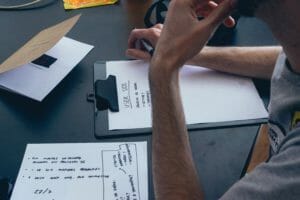How to Design Products Using Behavioral Science [Mind the Product]

Too often, we assume that consumers make rational decisions and take them at their word when we ask them about how they behave. But there’s a gap between what consumers say they will do and what they actually do. How do we bridge this gap and design products based on real behaviours?
Imagine you’re a completely rational human.
If you wanted to lose weight, you would start eating less. You’d say no to dessert. You’d go to the gym more. Sadly, this is not the reality for most people — we may have these goals, but we don’t take these actions. Behavioral economics is the field that maps these irrationalities.
Behavioral economics disrupts the traditional economics theory that suggests we act only to optimize utility. Classical economists claim that supply and demand are the primary forces driving our behavior, whereas behavioral economists have shown social norms, loss aversion, present bias, and more, drive our decision making as much as or more than classic time and money considerations.
Behavioral Design
Companies that understand that their customers are not fully rational use behavioral design.
This uses what we know about the psychology of decision-making — behavioral science — to purposefully inform design decisions. At Irrational Labs, we have used this systematic approach with organizations (like PayPal, Google, Aetna) to successfully design products and change users’ behavior for good.
The three steps below should show you how to implement behavioral design in your product development and design process
Step 1: Conduct a Behavioral Diagnosis
Conducting a behavioral diagnosis and understanding users’ current behavior at the most granular level possible is the first step towards changing user behavior.

We zoom in on the environment where a decision happens and map, step by step, all the actions someone must go through to get to the desired outcome. This means collecting data about the problem, choosing one key behavior and creating a behavioral map. Identifying a key behavior is probably the most critical step in this whole process, so you need to define the exact behavior you want from someone. This may sound intuitive, but many teams under-prioritize this step.
A behavioral map is a document that outlines each and every step a person has to complete to successfully complete the key behavior. In such a map, every page, every field, every click, and every decision counts as a step. By focusing on what people do instead of what they say, we can generate hypotheses about how to solve a problem based on actual behavior.
Step 2: Identify Psychological Biases
The second step is to identify and label psychological biases a user encounters as they proceed along the behavioral map. There may be present bias (the tendency to overvalue immediate rewards at the expense of long-term goals), loss aversion, optimism bias, or social norms at play. These biases influence our decision making and so should be addressed through smart product design.

Your goal is to list the specific biases that users experience at each step in the behavioral flow. As you may know, the world of psychological biases gets complex very quickly – Wikipedia lists close to 200. To simplify this world, our team uses a model we call the 3Bs:
- Identify a key Behavior
- Reduce Barriers
- Amplify Benefits
This framework doesn’t include all biases, but it does give us a place to start when analyzing a system.
Barriers are the friction involved in completing a behavior.
Benefits are the motivation to complete the behavior.
To design for behavior change, we want to remove barriers and amplify existing benefits or create new benefits.
Organizing your behavioral flow and identifying relevant barriers and benefits is a key step to creating behavior change. With an understanding of these principles, you can create more effective solutions to improve the uptake of your key behavior.
Step 3: Experiment
The third step is to design a solution that increases the key behavior you picked in Step 1.

To do this, pick a barrier you want to remove or a benefit you want to add to the system. You’ll use this insight to drive your design decisions. You may nail it the first time, or you may be way off the mark. To understand the effectiveness of your solution, design a controlled experiment and see if you have changed the likelihood that someone will complete your key behavior.
First, you will have to prioritize the psychological barriers in your flow with the most impact; choose the barriers in your flow that most detract from people completing the key behavior. Next you’ll want to come up with solutions to address these barriers. Some biases can be fixed easily with small tweaks; others require complete overhauls. If you’re unsure of a solution’s potential impact, mark it as a testing opportunity.
Finally, you can set up an experiment to test your solution (or multiple solutions) against a control group. By comparing the effects of solutions on your key behavior across different conditions, you can figure out which interventions are effective.
Behavioral Design can be Applied Anywhere
Want to create a new product to help students save money? Make your meditation app more sticky? Increase uptake of your city’s recycling program? Use behavioral design. The three steps of behavioral design — behavioral diagnosis, identifying psychological biases, and experimentation — allow you to be confident in your efforts to influence behavior for good.
Get an in-depth guide to implementing behavioral design with your research and design team. Download Irrational Labs’ Guide to Behavioral Design.
The post How to Design Products Using Behavioral Science appeared first on Mind the Product.
Source: Mind the Product https://www.mindtheproduct.com/how-to-design-products-using-behavioral-science/

Post a Comment